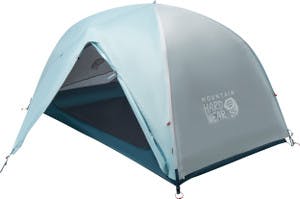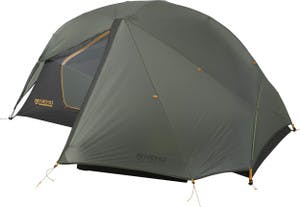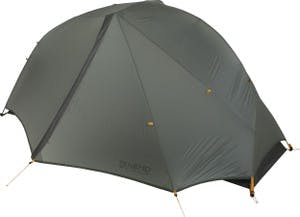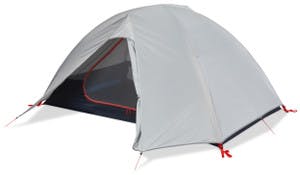Backpacking tents
- (3)MSR Hubba Hubba LT 2-Person Tent$679.95
- (4)MEC Camper 2-Person Tent$319.95
- (3)MEC Spark UL 1-Person Tent$449.95
- Shop backcountry camp
Backcountry camp
Canada’s widest selection of tents, sleeping bags, kitchen gear and more.
- (0)Big Agnes Copper Spur UL 3-Person Tent$849.95
- (122)The North Face Stormbreak 2-Person Tent$279.99
- (6)MEC Spark UL 2-Person Tent$549.95
- (3)MSR Elixir 4-Person Tent$619.95
- (90)The North Face Stormbreak 3-Person tent$329.99
- (49)Mountain Hardwear Mineral King 3-Person Tent$479.95
- (30)MEC TGV 2-Person 4-Season Tent$569.95
- (6)MSR Elixir 2-Person Tent$399.95
- (2)Big Agnes Copper Spur UL 2-Person Tent$749.95
- (9)MEC Camper 4-Person Tent$459.95
- (42)Nemo Kunai 2-Person Tent$719.95
- (0)Big Agnes Blacktail 3 Person Tent$369.95
- (1)MSR Elixir 3-Person Tent$479.95
- (12)MSR FreeLite 2-Person Tent$579.95
- (44)Nemo Dragonfly OSMO 1-Person Tent$579.95
- (7)Nemo Dagger OSMO 3-Person Tent 2025$799.95
- (3)MEC Volt LT 4-Person Tent$624.95
- (18)Nemo Dagger OSMO 2-Person Tent 2025$699.95
- (0)Big Agnes Copper Spur UL 5-Person Tent$1,279.95
- (0)Big Agnes Copper Spur UL 4-Person Tent$1,079.95
- (0)Big Agnes Copper Spur UL 1-Person Tent$629.95
- (31)Nemo Dragonfly OSMO 2-Person Tent$649.95
- (7)Nemo Aurora 3P Tent$479.95
- (2)MSR Hubba Hubba LT 1-Person Tent$579.95
- (2)MEC Spark UL 3-Person Tent$649.95
- (35)Sea To Summit Telos TR2 2-Person Tent$559.95
- (27)Mountain Hardwear Mineral King 2-Person Tent$409.95
- (1)Mountain Hardwear Mineral King 3P All-Season Tent$699.95
- (3)MEC Volt LT 3-Person Tent$524.95
- (19)Nemo Aurora 2P Tent$399.95
- (46)Nemo Hornet OSMO 1-Person Tent$529.95
- (17)Nemo Hornet OSMO 2-Person Tent$579.95
- (18)Sea To Summit Alto TR2 2-Person Tent$484.95
- (4)MSR Hubba Hubba LT 3-Person Tent$779.95
- (10)MSR Freelite 3-Person Tent$695.95
- (8)Nemo Mayfly OSMO 2P Tent$549.95
- (32)Nemo Dragonfly OSMO 3-Person Tent$759.95
- (0)Big Agnes Tiger Wall UL 2P$649.95
- (12)Nemo Hornet OSMO 3-Person Tent$729.95
- (4)Nemo Mayfly OSMO 3P Tent$629.95
- (5)Nemo Dragonfly OSMO Bikepack 2-Person Tent$759.95
- (26)The North Face Mountain 25 2-Person Tent$999.99
- (12)MSR Hubba Hubba Bikepack 2-Person Tent$729.95
- (5)Nemo Dragonfly OSMO Bikepack 1-Person Tent$679.95
- (49)The North Face VE 25 3-Person Tent$1,099.99
- (0)Big Agnes Big House 6-Person Tent$799.95
- (12)MEC Volt 2-Person Tent$339.95$399.95
- ‹
- 1
- ›
Compare (0)
Backpacking tents to make you feel at home outside
Whether you’re gearing up for an overnight trip, a climbing adventure in the mountains, or a multi-day trail that leads far into the wilderness, the tent you carry is one of the most crucial items in your kit. A good backpacking tent is light, roomy enough for everyone to sleep comfortably and built to keep you dry and protected from weather and insects.
Weather and camping seasons
The first choice to make is whether you need a 3-season tent or 4-season tent. A 4-season tent offers secure shelter in winter conditions. They’re designed to shed heavy snow and stay standing in the strong winds you might encounter when ski touring, winter camping or mountaineering. The materials and construction used are robust and high-performance, but they are heavier and less budget-friendly than 3-season tents.
Single-wall tents are a weight-saving option that mountaineers and alpinists might consider. Instead of a rainfly, they use a single ply of waterproof fabric and often have one door and a pared back design that shaves weight. Single-wall tents tend to feel cooler in winter than double-wall tents. In summer weather or when temps rise and fall, interior condensation is a potential drawback.
Frequently asked questions
What’s the difference between a 3-season and 4-season tent?
A 3-season tent is designed for spring, summer and fall. It protects against rain, wind and even light snow, while offering good ventilation for warmer weather. A 4-season tent is built for winter conditions. It has stronger materials to withstand snow loads and high winds, but tends to be heavier and more expensive.
When should I consider a single-wall tent?
Single-wall tents are ideal for alpine missions or ultralight winter trips where every gram matters. They save weight by skipping the separate rainfly and using one layer of waterproof fabric. However, they can be prone to interior condensation and may feel cooler in cold conditions.
What makes a good 3-season backpacking tent?
Look for full rainfly coverage, quality waterproofing, mesh panels for airflow and a solid floor. A good 3-season tent balances durability, weather protection and ventilation. Avoid tents with partial rainflies, which won’t fully protect you during a storm.
Are ultralight tents worth it?
Ultralight tents are ideal for solo hikers, fastpackers or bikepackers looking to cut down weight. Some weigh around a kilogram or less, with compact packed sizes. Just keep in mind that lighter materials can be less durable, and you may need to be more careful with setup and campsite selection.
Backpacking tents buyer’s guide
3-season tents
Most tents are designed for every season except winter. A well-made 3-season tent will shelter you from rain and wind and can handle a summer storm or even a light snowfall. If you expect to use your tent most often in summer, look for a tent with lots of mesh panels for ventilation. But as it rains in summer too, any quality backpacking tent will have a full-coverage rain fly that extends to the ground – cheap tents often have a fly that stops part way down.
Free-standing or non-freestanding tents
A tent that’s described as freestanding can be set up without stakes or pegs on any type of ground. A non-free-standing tent requires some pegs, guylines or trekking poles to give it structure. A free-standing tent can often be pitched in a tight space, but a tent that uses trekking poles and pegs is generally lighter and more compact.
Ultralight 1-person tents for solo camping and bikepacking
Weighing in at kilogram or less, a 1-person tent doesn’t take up much room in your pack and can be strapped easily to a bike frame. Even though these are minimalist structures, they come with quality features like full rain flies, durably waterproof floors and good ventilation. If you’re choosing an ultralight option, note that lightweight materials can be a bit fragile, so you’ll have to be careful to protect the floor and walls from sharp stones and branches. Some people find that gear storage is limited, and the interior space feels a bit cramped, so you’ll have to balance these factors when making your tent selection.
MEC carries a range of ultralight backpacking tents from Big Agnes, MSR and Nemo for solo travellers, couples and 3-person teams.
More expert advice for backpackers and campers
Our guide on how to choose a tent


















































